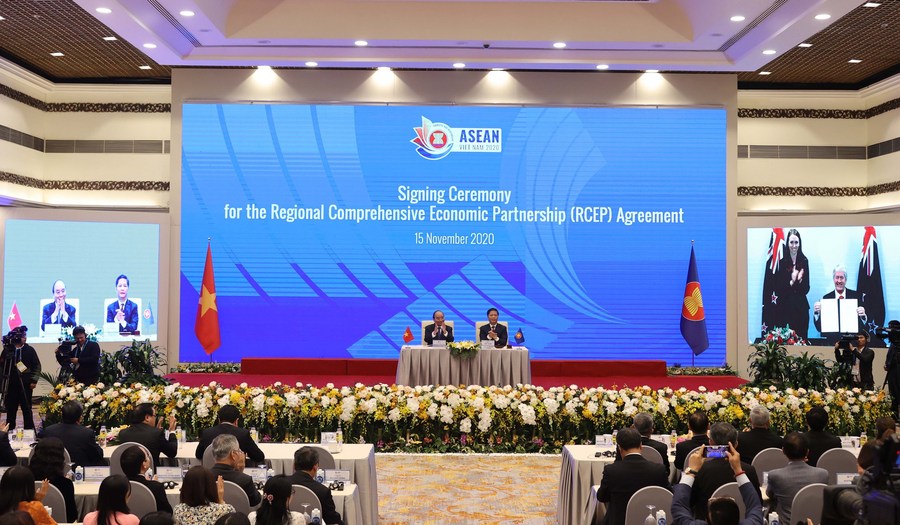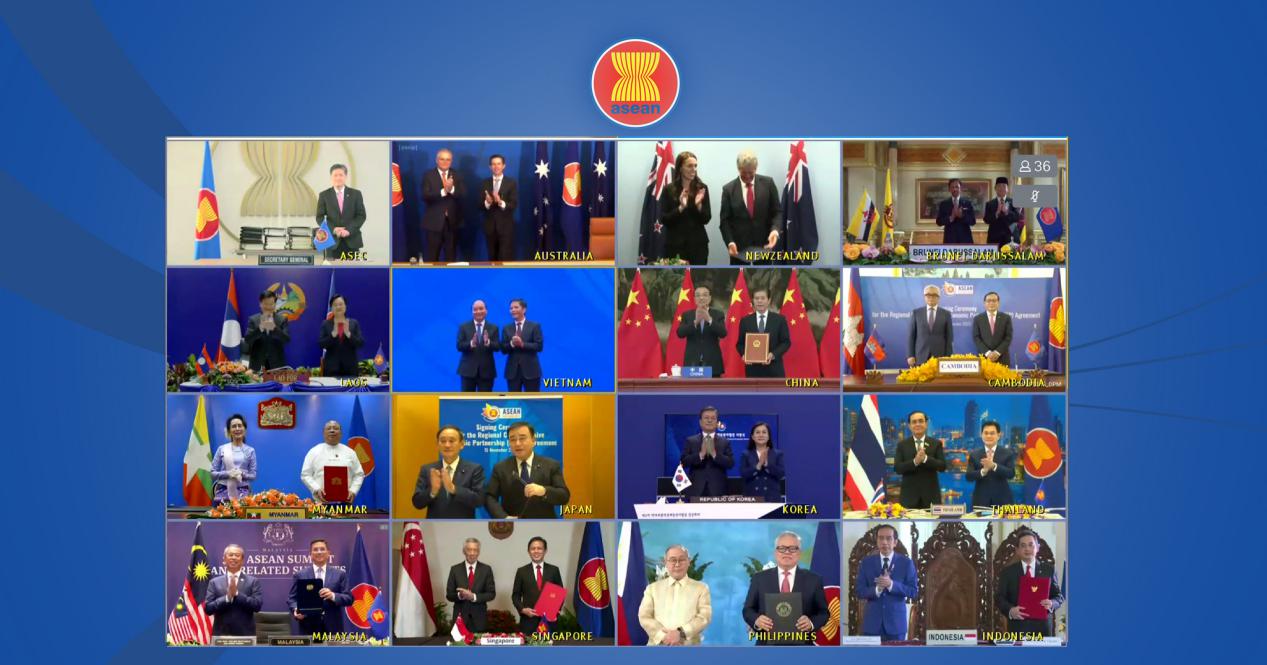

(By Wang Huiyao)After eight years of tough negotiations, November 15 saw a breakthrough for regional cooperation as 15 Asia-Pacific nations signed the biggest free-trade deal in history. Comprising the 10 ASEAN members, Australia, China, Japan, New Zealand and South Korea, the Regional Comprehensive Economic Partnership (RCEP) will reduce trade barriers across a third of the world’s population and economic output area. Economists at Johns Hopkins University estimate the pact could add US$ 186 billion to the global economy — a welcome boost as we face the worst recession in a century.

Perhaps more significantly, the RCEP will catalyse Asia’s long-term integration and is a major milestone in the opening up of China, providing a foundation for membership in more advanced trade agreements.
In its 14th five-year plan (2021-2025), China must adapt to a post-pandemic world shaped by economic uncertainty and the splintering of global value chains. As China’s first multilateral trade deal — and the first to include Japan and South Korea — the RCEP, which will remove around 90% of tariffs eventually, meshes powerfully with China’s dual circulation strategy, which aims to boost self-sufficiency while diversifying integration into global markets.
In “international circulation” — foreign trade and investment — the RCEP’s common rules of origin will make cross-border trade simpler and cheaper, allowing Chinese firms to optimize resource allocation between the domestic market and the rest of the region.
Links between China and RCEP supply-chain partners such as Vietnam and Malaysia are already deepening in sectors such as electronic manufacturing. China’s imports of integrated circuits from the Association of Southeast Asian Nations grew by 23.8% in the first half of this year, while its exports of the same to ASEAN grew 29.1%. ASEAN has surpassed the European Union to become China’s largest trading partner. The RCEP also dovetails with China’s plans to internationalize the yuan and develop Hainan into the world’s largest free-trade port.

Just as importantly, the RCEP aligns with another core thrust of China’s dual circulation strategy: boosting domestic consumption. The rise of the Chinese consumer is already one of the most promising growth stories for the post-pandemic world. In its 14thfive-year plan, the Chinese government will further increase consumer spending by raising productivity and wages, strengthening the social safety net and expanding economic opportunities in smaller towns and rural areas.
Earlier this month, President Xi Jinping projected that China would import US$ 22 trillion of goods in the next decade. Firms, workers and farmers in RCEP economies are well-placed to tap this bounty.
China’s role as the RCEP’s main magnet for imports will offset its status as an export powerhouse, and help to balance trade dynamics within the pact. This is important as tensions could emerge if the RCEP were to seriously exacerbate trade deficits in member countries.
Over time, cross-border trade and investment will expand the synergies between China’s dual circulation strategy and the RCEP, reinforcing the pact’s cohesion and viability as a vehicle for deeper regional integration. Like fine wine, ASEAN agreements tend to improve with time.
For China, the RCEP could be a stepping stone for more trade agreements, as the Asia-Pacific becomes a coherent trading zone like Europe or North America, albeit on a grander scale. For example, the RCEP boosts China’s prospects of sealing the trilateral free-trade agreement with Japan and South Korea. It also weakens obstacles to China joining the CPTPP.
Previously, some voices at home had raised doubts over China joining the RCEP, let alone the less flexible CPTPP, seen as a forerunner of even higher-standard trade agreements. Success in the RCEP will help quell this domestic opposition while reforms take China’s economy closer to CPTPP rules on issues such as intellectual property, market access and foreign investment.

The two regional agreements are by no means mutually exclusive — seven countries are members of both. In fact, they could form complementary tracks to regional integration: the rigorous CPTPP for more advanced economies and the less-demanding RCEP for developing Asian countries. And China could eventually help to bridge the two projects — under the Free Trade Area of the Asia-Pacific or some other mechanism.
Given that US President Joe Biden is open to renegotiating the pact his predecessor abandoned, the world’s two largest economies could one day come under its common umbrella of trade rules. Not only would this help to stabilize relations between China and the United States, it could also provide a template for World Trade Organization reforms.
International trade and cooperation have suffered in recent years under the weight of populism, protectionism and now the pandemic. Encouraging news on vaccine development and Biden’s election victory have raised hopes that the world can turn a page in 2021. As a catalyst for Asian integration and China’s continued opening-up, the RCEP is yet another reason to be optimistic.
Source: South Morning Post
桂ICP备14000177号 Copyright@2006-2013 Guangxi China-ASEAN Panorama Magazine Agency Co., Ltd. All Rights Reserved